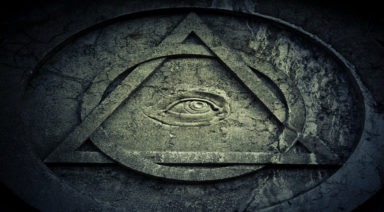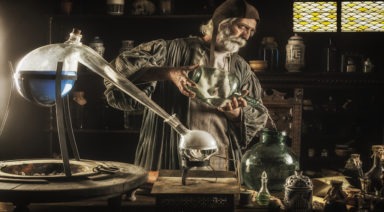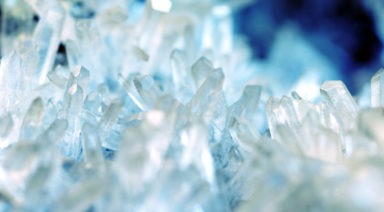Deeper Space: Episode 5

Deeper Space: Episode 5
EPISODE 5: SECRETS OF ANTI-GRAVITY
Antigravity and flight has always propelled the efforts of artists and visionaries. In episode 5 of Deep Space, researchers discuss the life and work of artist Charles A. A. Dellschau and inventor T. Thompson Brown. These individuals were not well known in the mainstream but demonstrated unique perspectives and insights that still intrigue antigravity researchers and conspiracy theorists today.
Is there a connection between an artist and a scientist that, when their stories are combined, uncovers the hidden history of antigravity? Did an artist’s eye and an under-the-radar scientist create the foundation for the field of antigravity? Let your imagination take flight through this portrait of an artist and a scientist.
“Aeroplanes are not designed by science but by art in spite of some pretence and humbug to the contrary. I do not suggest that engineering can do without science, on the contrary, it stands on scientific foundations, but there is a big gap between scientific research and the engineering product which has to be bridged by the art of the engineer.”
::John D. North, “The Case for Metal Construction” (1923)
Secrets of Anti-Gravity
New research is bringing to light that German scientists have been researching anti-gravity technology for over 150 years. Now we can finally understand the science behind the anti-gravity systems used for the German Haunebu craft and other vehicles in the secret space programs.
WHO WAS CHARLES A. A. DELLSCHAU?
Prussian born outsider artist Charles August Albert Dellschau (1830-1923) immigrated to Texas at age 19. Trained as a butcher and Confederate soldier, Dellschau became a self-taught artist and draughtsman who created hundreds of detailed watercolors of flying craft which ranged from the realistic to the fantastic. In the 1850s, the artist became affiliated with the mysterious Sonora Aero Club. This fraternity from Sonora, California participated in the balloon hysteria of the time.
In Western Europe, military personnel and civilians designed, built, and flew hydrogen air balloons. Of these revolutionary flying craft, few flew and many died. Dellschau’s actual involvement with the California Aero Club remains somewhat tenuous considering the lack of records connecting the two parties. It may be possible his Prussian heritage united him with what would have been a Eurocentric elite group experimenting with air travel.

Ben Rich, Lockheed Martin and UFOs
Who was Ben Rich and what did he say about UFOs? Controversy surrounds this legendary Lockheed Martin Director who publicly commented on the Secret Space Program.
ENCOUNTERS WITH FLYING AIRSHIPS
The nature of Dellschau’s work suggests however, his encounter with flying airships to be purely imagined. The paintings, which comprise 12 codices, are so fantastic that it is unlikely they portray any accurate representation of primitive flying technology.

Image courtesy of https://commons.wikimedia.org/
Dellschau’s work has been compared to other early outsider painters such as Swiss Adolf Wölfli (1864-1930) in terms of color, composition, and use of motifs such as the Mandala. Like Wölfli, and other untrained painters, Dellschau reached his creative peak in middle age. The Prussian born artist created perhaps a thousand watercolors depicting flying craft, air balloons, engines, generators, and both real and imagined antigravity technology.
Image courtesy of https://commons.wikimedia.org/
Often, Charles sketched the apparatuses, or as he called “aeros,” as annotated bisections with accompanying newspaper clippings and other multimedia. Dellschau worked in collage several decades before Pablo Picasso invented the artistic medium as it is understood today. Pieced together, the pasted fragments of newspaper documented one individual’s understanding of the Great 1897 Airship mystery, an early UFO phenomenon.
AN ALMOST FORGOTTEN PORTFOLIO
This artist and his work came very close to being completely forgotten. In 1968, an antique dealer named Fred Washington discovered pages of Dellschau’s portfolio flying out of a truck on its way to the local dump. Washington loaned selected works to a local university for a public exhibition. After seeing the watercolors and collaged works at the exhibition and researcher P.G. Navarro became obsessed with Charles A. A. Dellschau and devoted most of his life to studying the artist’s life. After careful inspection Navarro discovered a hidden Code within Dellschau’s oeuvre.
NYMZA: A SECRET GROUP UNCOVERED
Strange symbols resembling Greek and Roman letters can be found interwoven between misspelled English and German text. Navarro discovered that Dellschau used a simple cypher, and that the recurring symbols, “ĐM=XØ” translates to NYMZA. In consideration of the consistent design and repetition throughout the 12 books it would appear contextually that NYMZA would be the acronym and logo for a secret group.

SECRET SPACE PROGRAM GLOSSARY
The Secret Space Program is shrouded in mystery, but information from government whistleblowers, intelligence operatives and former astronauts has been surfacing for decades. Here are the key terms, events and people you should know about.
WHO WAS THOMAS TOWNSEND BROWN?
”At Caltech I failed in Chemistry and Physics! My other grades were good. Reason I failed – I disagreed with the policies of the Institution limiting time spent on experiments in the laboratory. As soon as I’d get my experiment set up, the bell would ring and I would have to disassemble everything. I never could finish an experiment. That’s when I became determined to have the lab at home, where I could take my time and do the kind of job I felt should be done.”
THE BIEFELD-BROWN EFFECT
American inventor Thomas Townsend Brown Or T. Townsend Brown (1905-1985) discovered an electrogravitic phenomenon known as the “Biefeld-Brown Effect.” In sum, when two electrodes of unequal size are powered with a high voltage between them, air molecules become ionized near the sharp points and edges of the electrodes. An ionic wind is generated, which transfers its momentum to the surrounding neutral particles.
According to scientist Dr. Richard Boylan, the most primitive antigravity technology is Electrogravitic: “This involves using voltages in the millions of volts to disrupt the ambient gravitational field.” This is relevant to the work of T. Thompson Brown. In this episode of Deep Space, physicist and astronomer Paul LaViollete summarizes the seed of Brown’s research in this field, so to speak: “It is true there is a correlation between charge and gravity… If you can create what is called unbalanced forces on the capacitor, the charge on one side of the capacitor pushes on the capacitor one way a different amount than the other charge pushes the other way.”
ELECTROGRAVITIC ENERGY
This may be a simple concept to grasp, but as David Wilcock posits, this fact of physics has been too often occluded: we should not be made to believe that “gravity is one thing and electromagnetic energy is something else.” Researchers such as Boylan believe that electrogravitic technologies power military aircraft such as the B-2 Stealth Bomber and the TR3-B Astra triangular craft.

Dr. Nikolai Kozyrev and the Mystery of Torsion Fields
Dr. Nikolai Kozyrev’s research on torsion fields influenced theories of time and space. Learn about torsion physics and how your emotions may directly impact time.
OTHER METHODS OF ANTIGRAVITY
MAGNETOGRAVITIC ANTIGRAVITY
In addition to electrogravitic technology, antigravity craft can also employ magnetogravitic properties. Magnetogravitic antigravity involves generating high-energy Torsion fields spun at high RPMs which disrupts the surrounding gravitational field. The generated force counters that of the Earth’s gravitational field. It is torsion flields that constitute the basis of Nikolai Aleksandrovich Kozyrev’s work and possibly the antigravitational properties powering the Nazi Bell or Die Gloke.
HARNESSING THE GRAVITATIONAL STRONG FORCE OF UNUNPENTIUM
According to Boylan, a third method “is direct generation and harnessing of the gravitational strong force. Such a strong-force field extends slightly beyond the atomic nucleus of Element 115 . . . by amplifying that exposed gravitational strong force, and using antimatter reactor high energy, and then directing it, it is possible to lift a craft from Earth.” Element 115, also known as Ununpentium, is a superheavy synthetic element that could only naturally occur in a double star solar system. This discovery suggests that early antigravity technology using this element would likely be of extraterrestrial origin.
A FUTURE WITH ANTIGRAVITY TECHNOLOGY
Antigravity technology offers many advantages to the modern world, including the promise of clean energy. However, it’s use may diminish the powerful hold major corporations have on energy markets. Freedom of technology, just like freedom of information, potentially threatens the global elite, the richest of the rich, and could disrupt the current status of international superpowers. Uncover more about the hidden history of antigravity technology on Deep Space: pay close attention as the merging of art and science may continue to unveil answers critical to the future of humankind. Misinformation abounds and it is up to you, dear reader, to seek the truth.
SUGGESTED READING LIST
Explore the following titles for more information on Charles A.A. Dellschau, airships, and Thomas Townsend Brown:
- Baker-White, Tracy. “Flight or fancy? The secret life of Charles AA Dellschau.” FOLK ART 25, no. 3 (2000): 46-54.
- Busby, Michael. Solving the 1897 Airship Mystery. Pelican Publishing, 2004.
- LaViolette, Paul A. Secrets of Antigravity Propulsion: Tesla, UFOs, and Classified Aerospace Technology. Inner Traditions/Bear & Co, 2008.
- Schatzkin, Paul. Defying Gravity: The Parallel Universe of T. Townsend Brown. Embassy Books, 2009

Neil Armstrong Gifted a Girl Moon Dust, Now NASA Wants It Back
If Neil Armstrong gifted you a vial of moon dust when you were a child, you would probably cherish it your entire life, at least that’s what Laura Ann Cicco did. But when NASA became aware she was in possession of “lunar material,” it sought to confiscate the gift from her, more than 40 years later.
Now Cicco, née Murray, is suing the space agency to hold on to her prized gift from the famed astronaut. Cicco and her attorney are contending that lunar material is not contraband and that it is not illegal to possess moon rocks. Cicco says she is the rightful owner of the sample and that there is no law preventing her from owning it.
The dust has been tested and results say it has been cross-contaminated with earthly material, likely from being vacuumed out of a spacesuit or maybe simply from being on Earth for so long. But the report did find consistencies with “the known composition of lunar regolith,” saying “there is no evidence to rule out a lunar origin.”






































